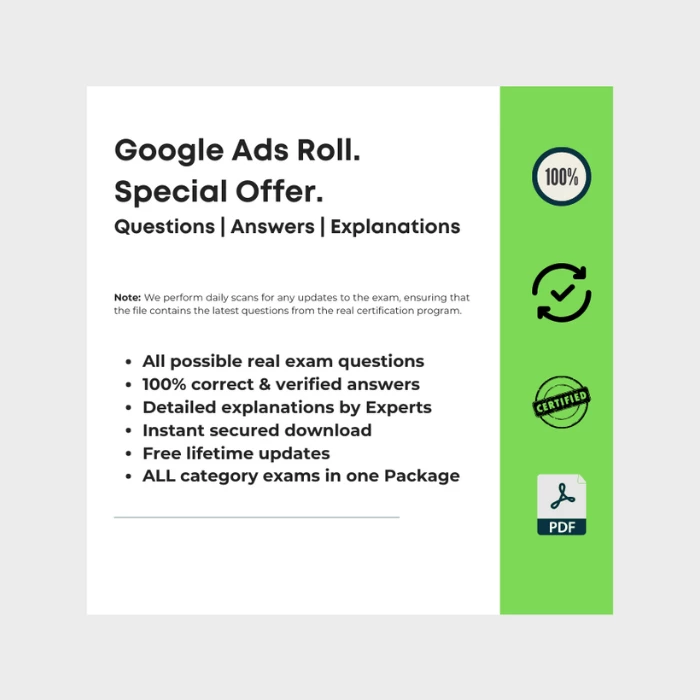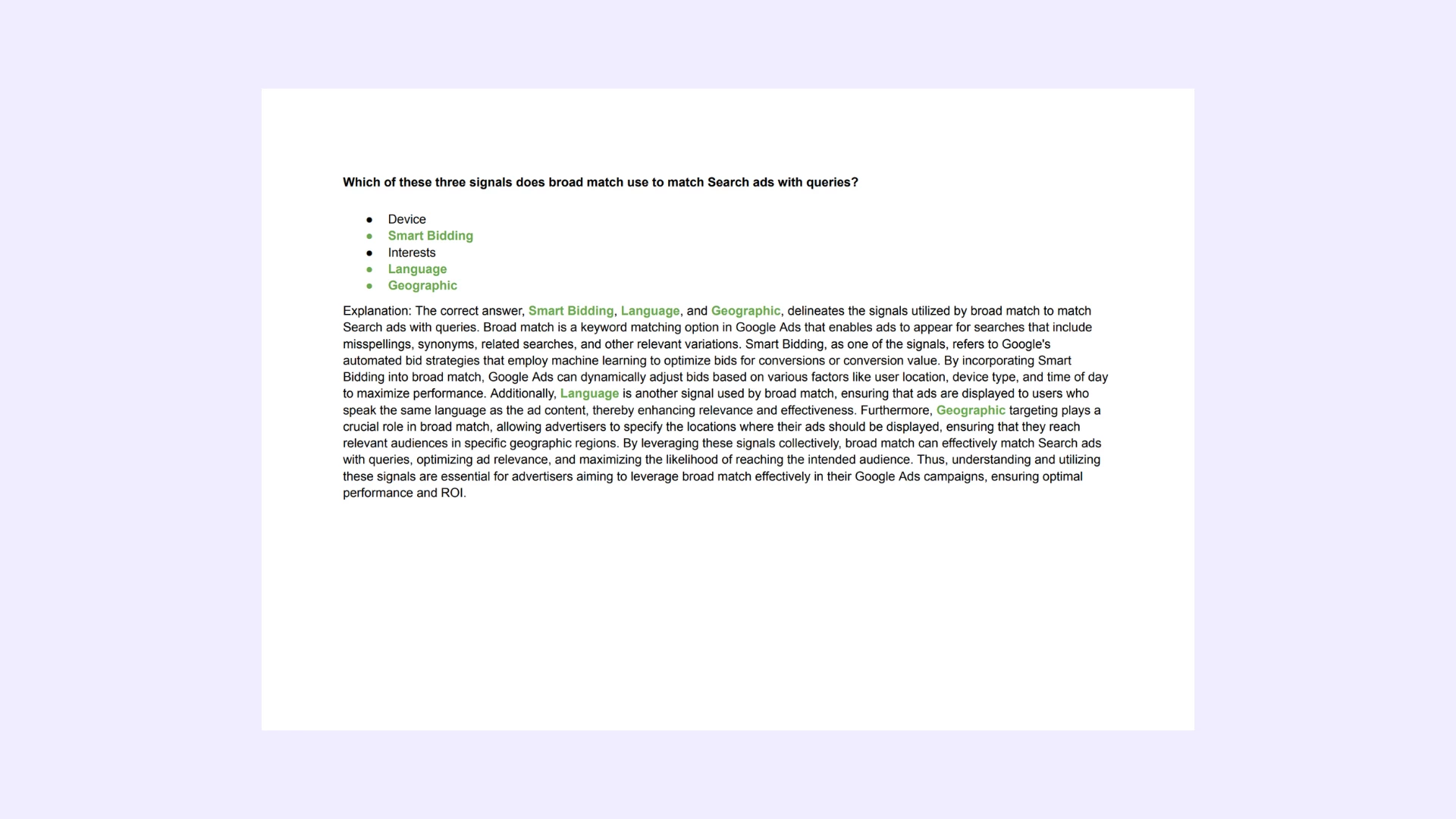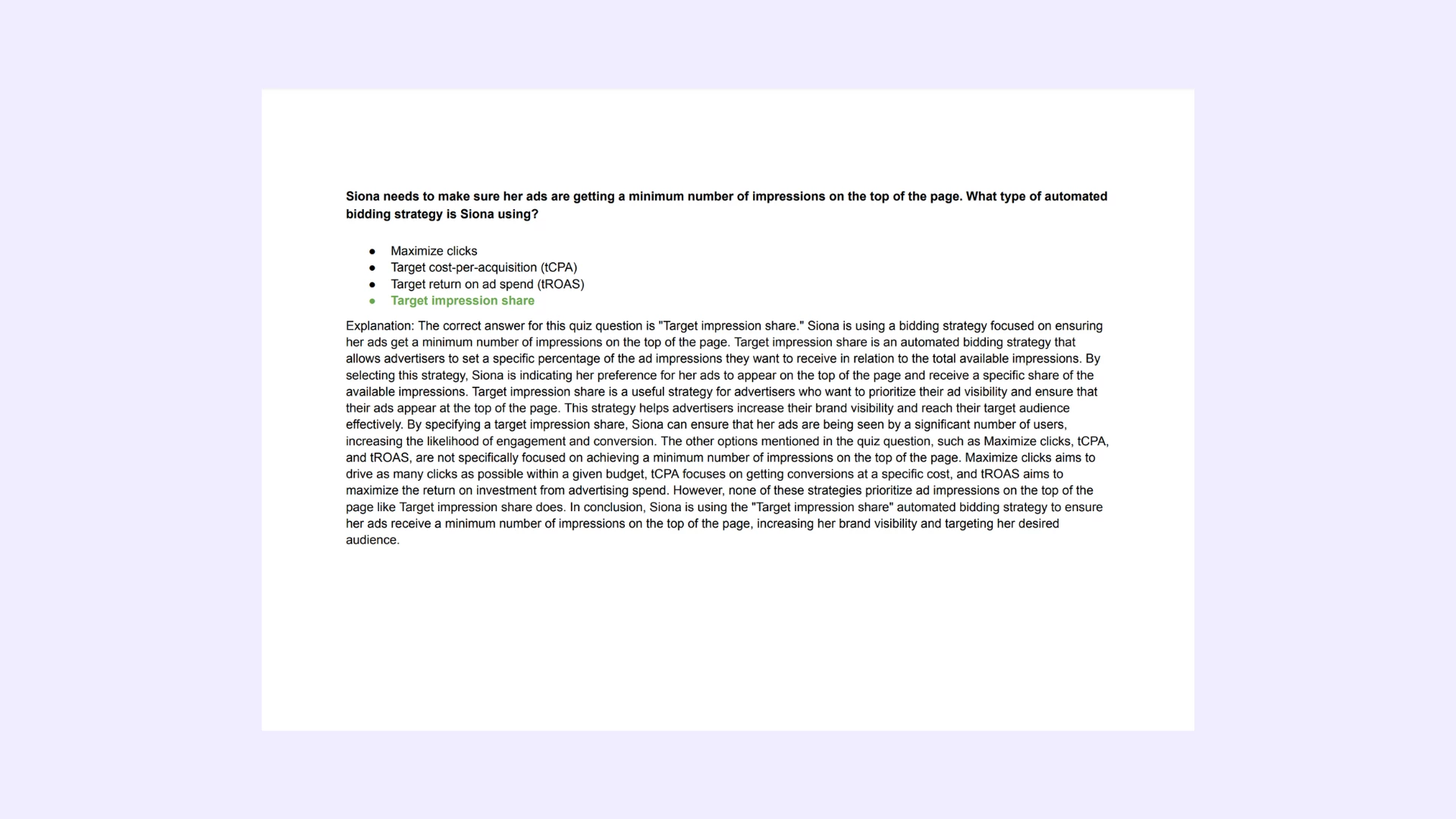You own a restaurant called Ristorante Abigaille in Florence, Italy. A customer finds your site by clicking on your ads after performing each of these searches: 'restaurant tuscany,' 'restaurant florence,' '3 star restaurant florence,' and '3 star restaurant abigaille florence.' The customer makes a reservation after clicking on your ad that appeared with '3 star restaurant abigaille florence.' Using the data-driven attribution model, what keyword would receive credit for the conversion?
The conversion would be attributed to each keyword equally, therefore each keyword would share equal credit (i.e., 25% each) for the conversion.
The last keyword would be attributed with the conversion, therefore the last keyword would receive 100% of the credit for the conversion.
The conversion would be attributed to each keyword proportionally, therefore each keyword would receive credit for how much it contributed to the conversion.
The first keyword would be attributed with the conversion, therefore the first keyword would receive 100% of the credit for the conversion.
Choose an option to see if it’s correct. Check the explanation below. Learn Smarter, not Harder.

Google Ads Roll. Includes Answers for Every Real Google Ads Certification Exam.
All-in-One: Get all Google Ads exams answers with explanations in one bundle. This package includes answers for every current Google Ads certification. Regular updates to reflect the latest exam version. -> See what's included.
Questions | Answers | Explanations. Free Lifetime Updates.


Need a single cerification exam answers? Check out our -> list of certification exams answer keys. Learn Smarter. Obtain or Renew your certificates with peace of mind!
Explanation: You own a restaurant called Ristorante Abigaille in Florence, Italy. A customer finds your site by clicking on your ads after performing each of these searches: ‘restaurant tuscany,’ ‘restaurant florence,’ ‘3 star restaurant florence,’ and ‘3 star restaurant abigaille florence.’ The customer makes a reservation after clicking on your ad that appeared with ‘3 star restaurant abigaille florence.’ Using the data-driven attribution model, what keyword would receive credit for the conversion?
Explanation: In this scenario, utilizing the data-driven attribution model, the most accurate method for assigning credit for the conversion is to attribute it **proportionally** to each keyword. The data-driven attribution model takes into account the contribution of each touchpoint along the customer's journey, considering factors such as the sequence of interactions and the influence of each keyword in driving the conversion. Therefore, each keyword—“restaurant Tuscany,” “restaurant Florence,” “3-star restaurant Florence,” and “3-star restaurant Abigaille Florence”—would receive credit based on its specific role in leading the customer to make a reservation at Ristorante Abigaille. This approach provides a nuanced understanding of the effectiveness of each keyword in contributing to the conversion, allowing marketers to optimize their advertising strategies accordingly. Unlike other attribution models that assign equal credit to all touchpoints (first-click or last-click attribution) or give all credit to the first or last touchpoint, the data-driven model offers a more granular analysis, reflecting the complexity of customer journeys in the digital landscape.
Were do I find this certification program?
This certification program is available on the Google SkillShop Platform. With our file, you can get certified in just a few minutes. Free updates are included.
Save time on exams and spend more time practicing.
Best-value Guides
- Special Bundle Offer Google_Ads_Roll
- Special Bundle Offer HubSpot_Exams_Roll
- Special Bundle Offer Google_SkillShop_Roll
- Special Bundle Offer Marketing_Platforms_Roll